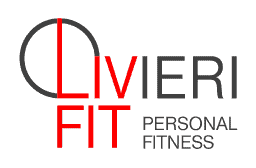To continue to help you, maintain your post COVID health program, below are additional health myths I would like to share with you to further clear the air on misconceptions.

TOP 10 MYTHS – PART 2
Myth #6: Yoga can help with all sorts of muscle aches and back pain…
The truth is that Yoga can help you with most muscle issues but not all and not back pain as a matter of fact. Yoga, can actually worsen your back concerns. If your back pain is muscular related, then yes, some yoga stretches are quite beneficial, and some positions can build your core. However, if your back pain is related to other issues such as disc issues, yoga is not likely to help you in any way and can further injure you and cause more pain. In cases related to your back I would always suggest seeking medical advice and approval before beginning any exercise program.
Myth #7: Women shouldn’t lift weights… It will make you bulky or look like a man.
This one drives me nuts and even after 20 years of facts and science, many are still under such impressions. The truth is one would need to spend hours per day lifting weights and take some form of substance enhancement to make this happen. You really have to overload muscles to create bulk, it’s very hard for women; we have too much estrogen to build large amounts of muscle bulk. So ladies, STOP the fear, gaining strength will help you decrease body fat, increase lean muscle mass and burn calories and age beautifully.
Myth #8: No pain No gain.
Many often think if their bodies don’t hurt after a workout, the workout was not challenging enough. This is so exaggerated. While resistance training can be intense and from time to time produce some soreness, pain is not and should not be part of any workout. I believe that pain can be a warning sign that something is wrong and or a sign of exhaustion to your muscles even torn ligaments. Most professional athletes know that getting enough rest after any workout is imperative. Rest days are critical for not only physical but also psychological reasons. So allow your body to repair, rebuild and strengthen.
Myth #9: Stretching before working out is crucial to preventing injury.
Fact: Stretching after a workout can be beneficial, however, stretching before a workout actually doesn’t increase your range of motion. In fact, some studies suggest that stretching destabilizes muscles, making them less prepared for strenuous exercise, especially if you’re doing something like strength training. Instead, do a warm-up, 5 to 10 minutes of rhythmic movements such as running in place, treadmill, bike even dancing to your favorite tune, basically any rhythmic movements which get your blood pumping and prepares you for your workout. I would strongly suggest stretching at the end of your workouts, for me this is usually the cool down period.
Myth #10: Heart rate monitors will let you know how hard you are working.
Hear rate monitoring is a flawed science just like calorie cardio machines that give you a calorie read-out of what you’ve burned, most of them don’t even ask important and personal information in order for any accuracy. The most important detector of how hard you’re working out is by how you feel and how your body is performing. The amount of effort and exertion is your own sense of how hard you are working and a much more reliable measure of exercise intensity. Your heart rate can also change in intensity from the type of cardio choices you make such as running verses walking, etc. Back when I was a runner and was training for various races from mini marathons to longer races, one of the Road Runners Club workshops suggested using the talk test. You can measure how intensely you are working out by talking in full sentences or short phrases or if you could barely spit out a few words after training. I still use this method today with my own clients.
